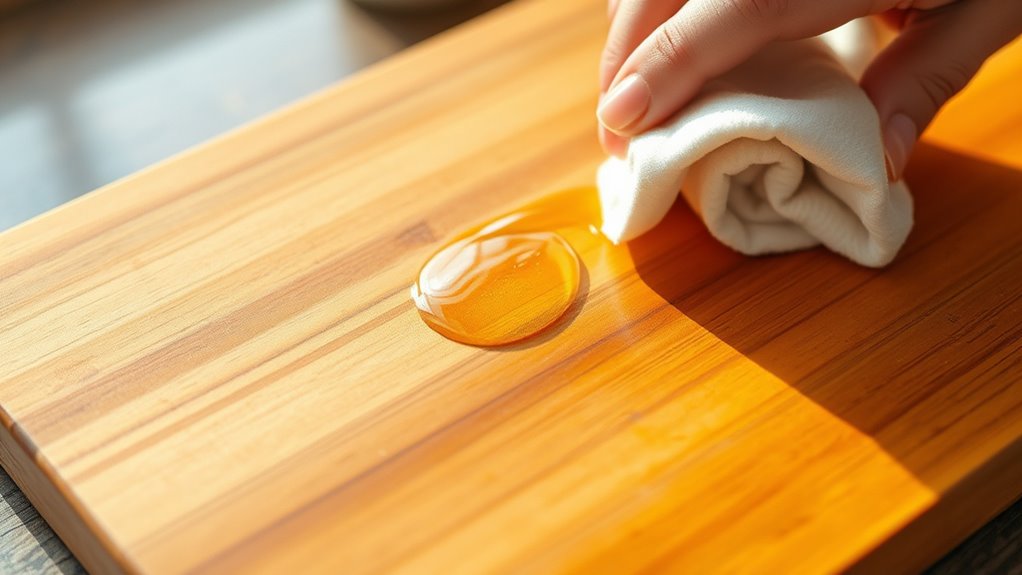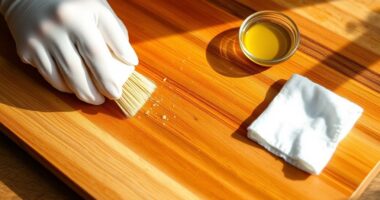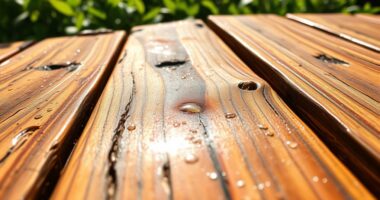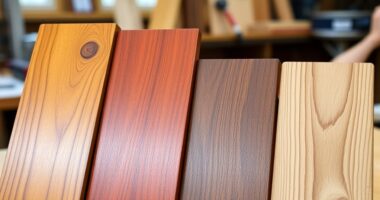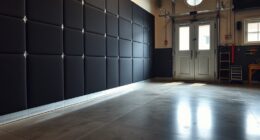To maintain your wooden cutting boards, clean them promptly after each use with mild soap and warm water, scrubbing both sides. Dry thoroughly to prevent mold and warping, and regularly apply a thin layer of food-grade mineral oil or beeswax to protect the surface. Store the board upright for good airflow, and avoid soaking or placing hot items directly on it. For more tips on keeping your boards in top shape, keep exploring these best practices.
Key Takeaways
- Clean with mild soap and warm water, scrubbing both sides after each use, then thoroughly dry to prevent mold.
- Regularly apply a thin layer of food-grade mineral oil or beeswax to seal and protect the wood.
- Store upright or hang to ensure proper air circulation and prevent moisture buildup.
- Avoid soaking, placing hot items directly on the surface, or using the dishwasher to prevent warping and damage.
- Inspect for cracks or splits, and sand or reseal as needed to maintain safety, durability, and appearance.
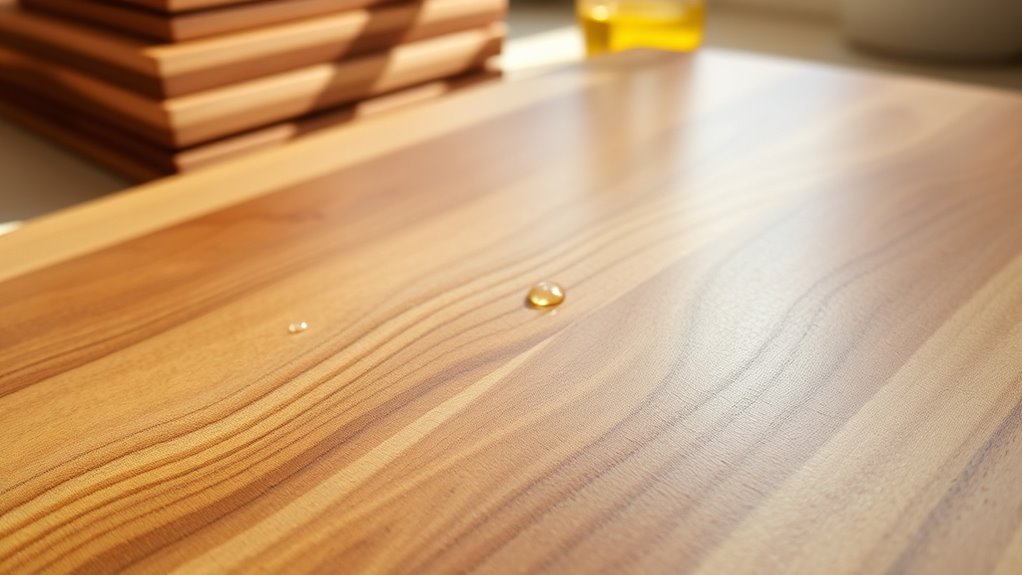
Maintaining your wooden cutting board is vital to guarantee its longevity, safety, and performance in the kitchen. Proper cleaning immediately after use helps prevent bacteria buildup and keeps your board in top shape. Use mild soap and warm water, scrubbing both sides to ensure even cleaning and thorough drying. Avoid soaking the board, as excessive water absorption can lead to warping and cracks. Steer clear of harsh abrasives, steel wool, or chemical cleaners that can scratch or damage the wood surface.
Clean with mild soap and water, dry thoroughly, and avoid soaking to preserve your wooden cutting board.
For stubborn stains, a gentle mixture of baking soda and water works effectively without harming the wood. Never put your wooden board in the dishwasher; high heat and water pressure weaken the glue joints and cause cracking over time.
Dry your board completely after washing to prevent moisture from seeping into the wood, which could lead to warping or mold growth. Store it upright or hang it to promote good air circulation and avoid trapping moisture underneath. Don’t stack objects on top of the board during storage, as this can cause uneven warping or promote mold development. Keep your board in a cool, dry place, avoiding humid or hot environments, and steer clear of placing it flat on counters where trapped moisture could damage it.
Regular seasoning with food-grade mineral oil or beeswax is key to maintaining your board’s integrity. Apply a thin, even layer with a clean cloth or paper towel once a month, rubbing it into the wood grain and removing any excess. Vegetable oils should be avoided because they can turn rancid, damaging the wood and creating unpleasant odors. Seasoning forms a protective barrier against water penetration and staining, prolonging the life of your board by preventing drying and cracking. Proper seasoning is essential to maintain the moisture balance and prevent the wood from drying out and cracking over time.
Protect your wooden board from damage by avoiding submersion in water or soaking, which can cause swelling and compromise glue joints. Never place hot pots or pans directly on the surface, as heat can cause burns and damage the wood. Use gentle cutting techniques, avoiding serrated knives or stabbing motions that can gouge or scratch the surface. Regularly inspecting your board for signs of damage helps identify issues before they become serious, especially since wooden boards are porous and susceptible to deterioration if not properly maintained.
When needed, sand and refinish the board with fine-grit sandpaper to smooth out damage, then reapply oil or beeswax to restore the protective coating. Understanding the importance of contrast ratio can also help you choose the right finish for your wooden board, ensuring it looks appealing and functions well.
Hygiene remains vital for safe use. Clean your board promptly after each use, using natural disinfectants like vinegar or baking soda solutions to kill bacteria without harsh chemicals. Regular oiling seals the porous surface, preventing bacterial infiltration and stains. To avoid cross-contamination, dedicate specific boards to different food types or thoroughly clean between uses.
Periodically inspect your board for deep cracks or splits, which can harbor bacteria; replace the board if necessary. Regular refinishing through sanding and resealing keeps your wooden cutting board in prime condition, ensuring it remains a safe and durable tool in your kitchen.
Conclusion
To keep your wooden cutting boards in top shape, clean them regularly, oil them often, and store them properly. By caring for them daily, preventing stains, and avoiding moisture, you guarantee they stay durable and beautiful. Consistent maintenance, mindful use, and gentle treatment make all the difference. So, embrace these simple steps, enjoy safe food prep, and let your wooden boards serve you well for years to come. After all, good care is the key to lasting beauty.
